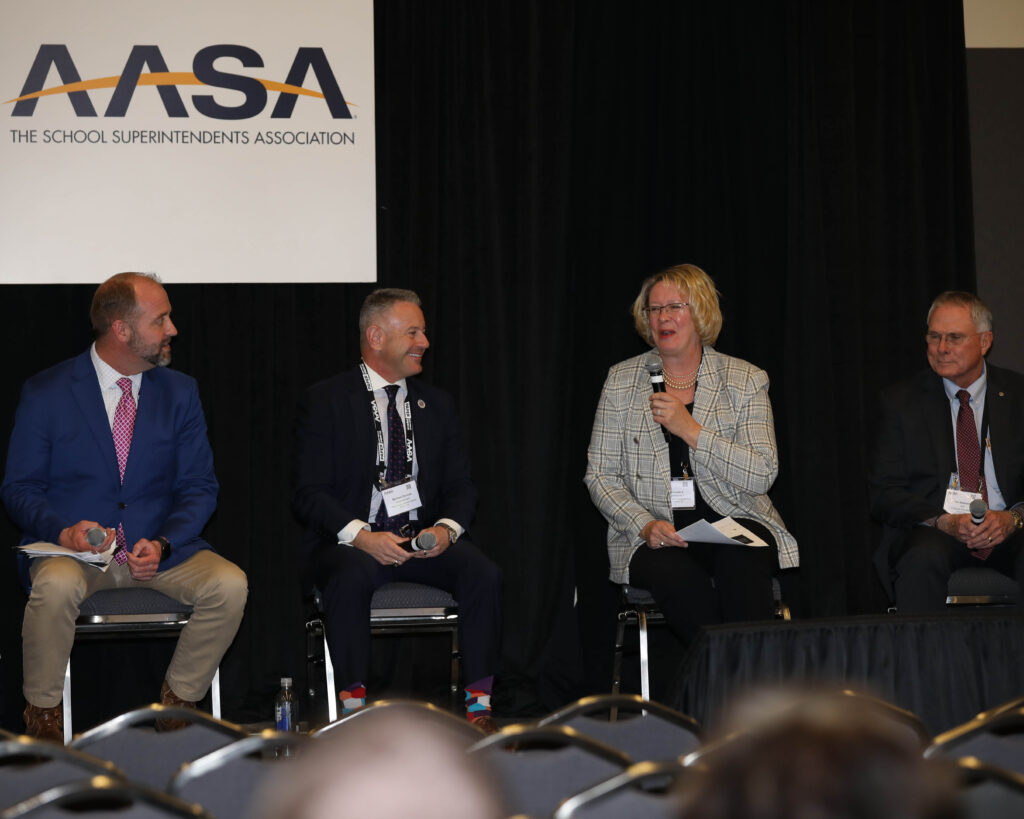As co-lead of the AASA Advancing Rural Education cohort, Brian Creasman moderated the Rural Education Trends and Strategies presentation on Friday at the 2023 AASA National Conference on Education in San Antonio.
Creasman, superintendent of Fleming County Public Schools in Kentucky, said representatives from about 30 school districts visit his school system over the year to review its graduate profile, competency-based instruction and career and technical education’s student enterprises.
Jill Louters, superintendent of the New Rockford-Sheyenne School District in North Dakota, said it’s important that rural school leaders come together “and build around the beliefs we share.” Rural resiliency is key, she said, and one step toward that goal is working with economic and workforce development interests and small and large workplace employers.
Michael Duncan, superintendent of Pike County Schools in Georgia, said his district doesn’t have a lot resources, “but we’re in an area with great partnerships.” Indeed, partnerships, such as those with employers and higher education, are key, Duncan said, to address “changing workforce [needs]” and ensure students have “durable skills that transfer over time and space.”
Kim Alexander hails from Roscoe, Texas, where as superintendent he led the Roscoe Independent School District from 2003 to 2019. He now is CEO of Collegiate Edu-Nation, a nonprofit “growing a network of high-performing school districts using their defining strengths to tackle their biggest challenges.”
“A more highly educated rural population will lead to the innovation that creates rural job creation,” Alexander said. Success is measured by students who have “meaningful workforce certificates in hand” or “college degrees in hand without student debt.”
When asked by a conference attendee to assess how best to bring mental health resources to a rural community, Louters said her district uses teletherapy services in a limited fashion. Duncan said his district is “struggling mightily with helping students with emotional help.”
John Frank, superintendent of the Lewis County School District C1 in Lewistown, Mo., said his district is so rural, it takes about 45 minutes to reach the nearest McDonald’s or Walmart. He wanted to know how best to secure partnerships when there are no businesses and universities nearby.
“If you’re so rural with no feasible opportunity for partnerships, I believe there’s some things that can be done remotely to help you think about what that might look like,” Duncan said.
To address these and other topics, visit the AASA rural cohort at aasa.org. Visit Collegiate Edu-Nation at edu-nation.org.
(Linda Chion is a senior editor with Conference Daily Online and a freelance writer and editor in Lithia, Fla.)

